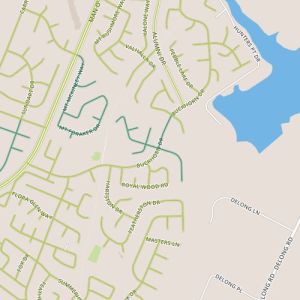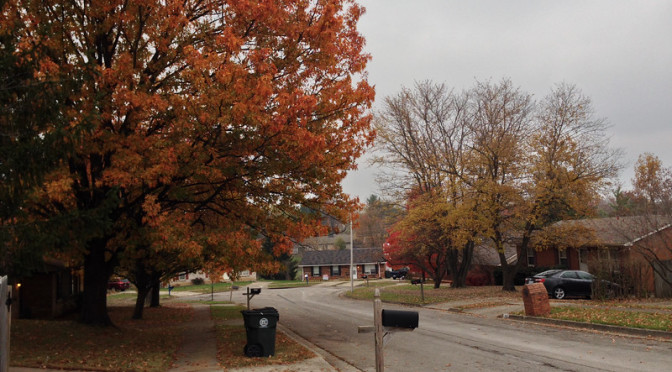 Today’s walk was a chilly one, with flurries flying as I passed through the Century Hills area around Buckhorn road. The houses here are 1980’s vintage following a ranch-style layout. And though this is clearly tract housing with a limited number of models and the houses themselves are relatively austere, I think the architecture is above par. Some models have clerestory windows, others have a unique bay window design.
Today’s walk was a chilly one, with flurries flying as I passed through the Century Hills area around Buckhorn road. The houses here are 1980’s vintage following a ranch-style layout. And though this is clearly tract housing with a limited number of models and the houses themselves are relatively austere, I think the architecture is above par. Some models have clerestory windows, others have a unique bay window design.
There weren’t a lot of surprises here. A sign near a stream calls attention to a sewer line replacement project that turns out to be one of many projects intended to eliminate sanitary sewer overflows and make other improvements to meet Clean Water Act requirements. There were some other hints about interesting negative space including a cell tower that is in the middle of the dogleg at the north end of Smoky Mountain. Otherwise, this felt like a pretty typical residential area.
A couple of things struck me today. The first is the consistency in street form between post-war middle class neighborhoods, (particularly where single-family homes dominate). These neighborhoods reliably have sidewalks with reasonably sized treelawns whether they were built out in the 1950’s or 2010’s. I compare this to my experience in other places where sidewalks (if they exist at all) may or may not be located directly alongside the street. It’s consistent enough to make one almost believe it’s been codified. But not quite, because some neighborhoods, usually at the higher end of the price range, do forgo sidewalks.
The second is how differently sidewalks are treated in different places. You’re more likely to find cars parked over sidewalks on cul-de-sacs (here, a car is parked on and along the sidewalk, apparently this is ok with the neighbors). In places, streets are acceptable places for overflow parking while in others, driveways are packed (often at the expense of streets) to keep streets open. Sidewalks usually feel as if they are treated as an amenity within neighborhoods, something to be used to walk the dog or to go for a stroll. But its an amenity whose value differs depending on where you go.
